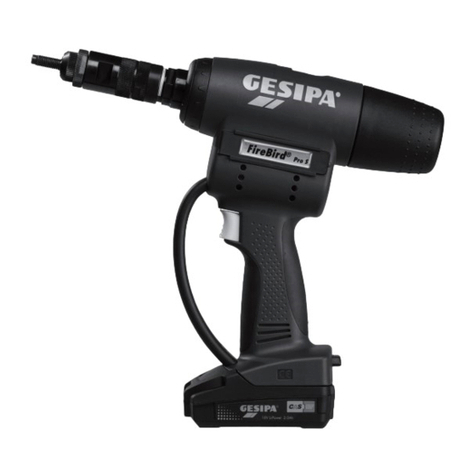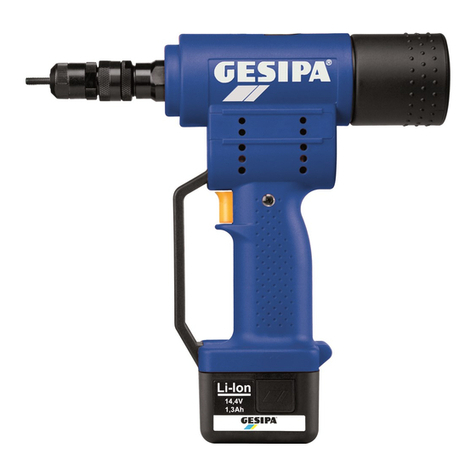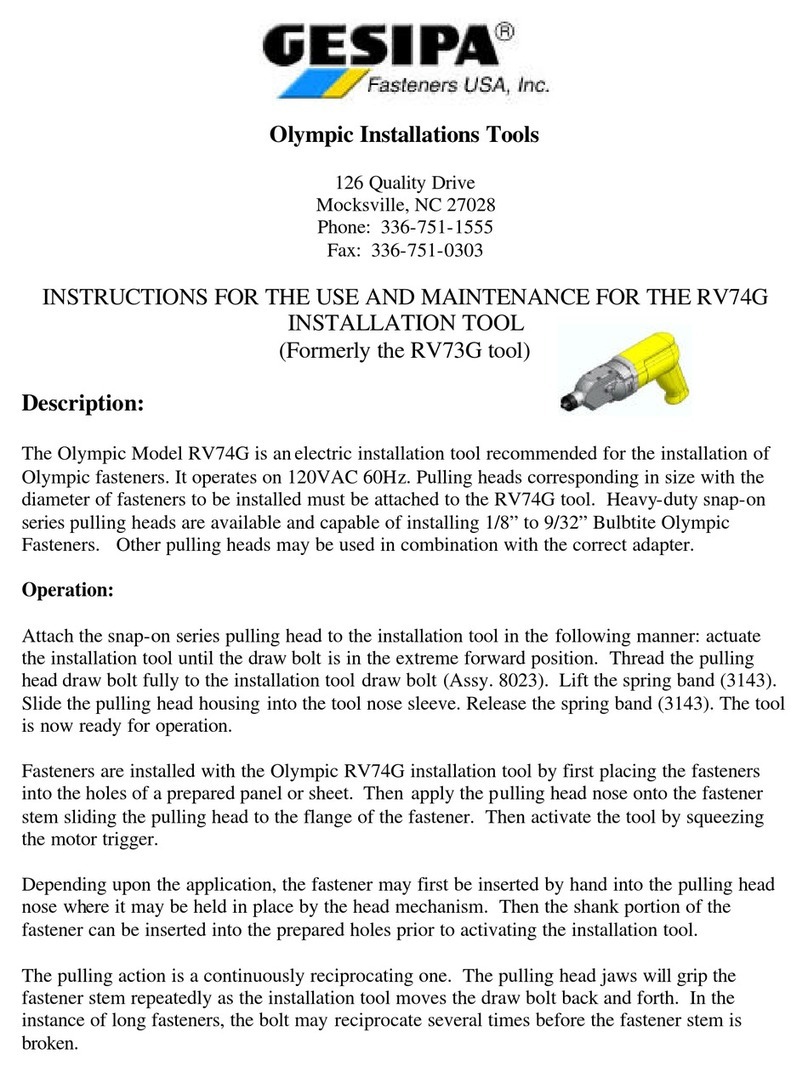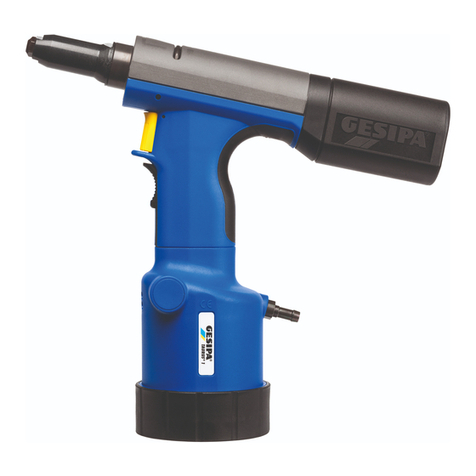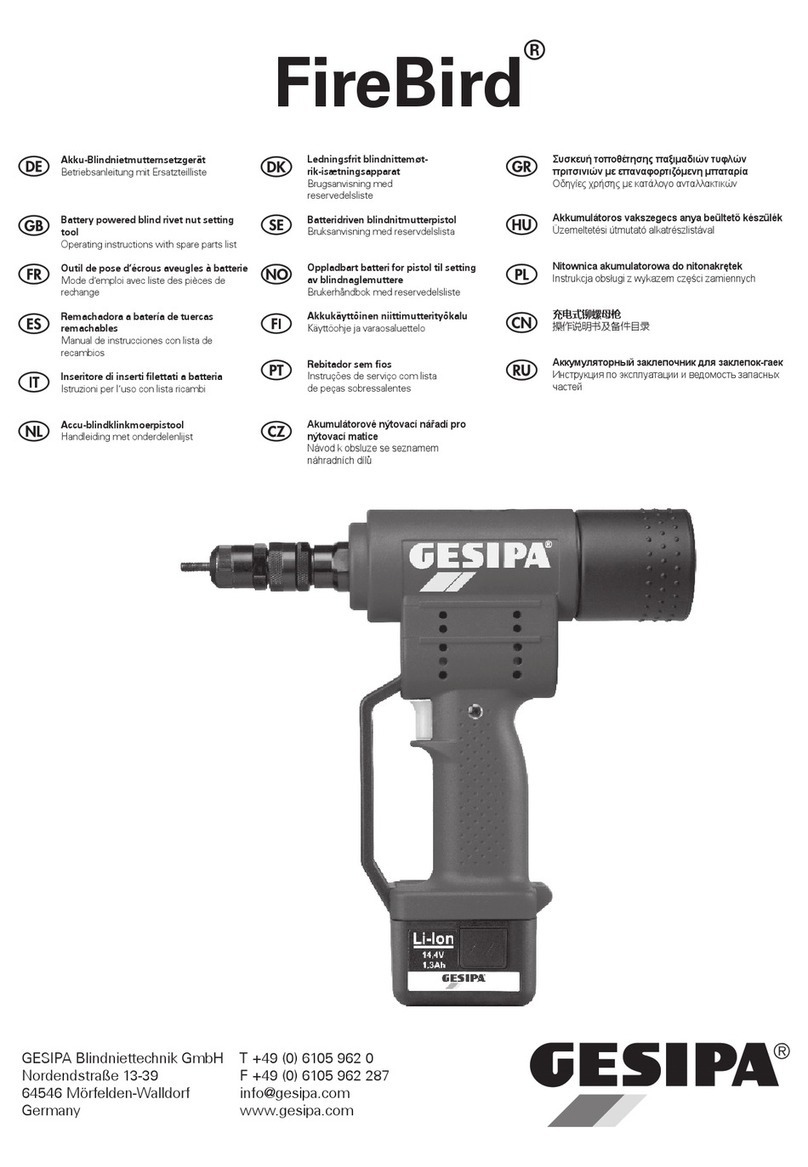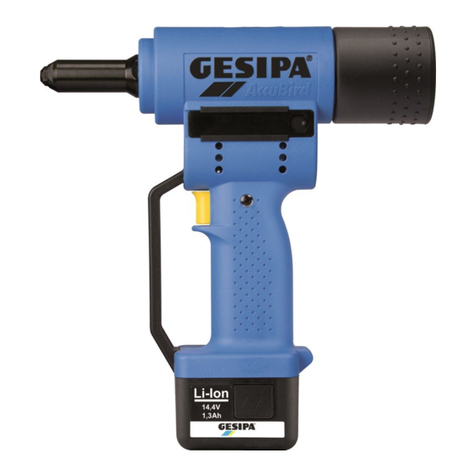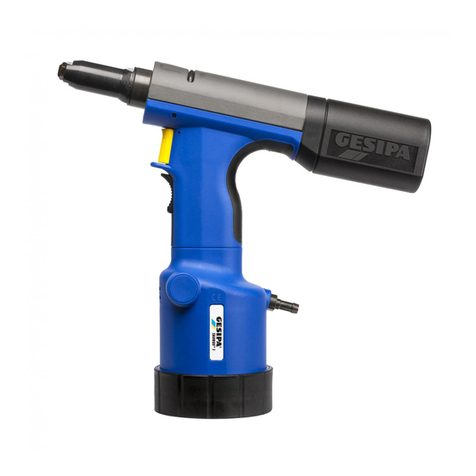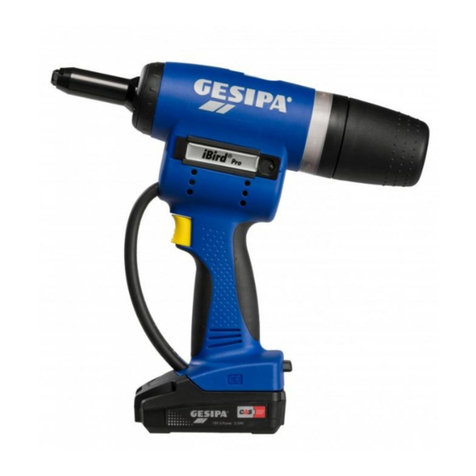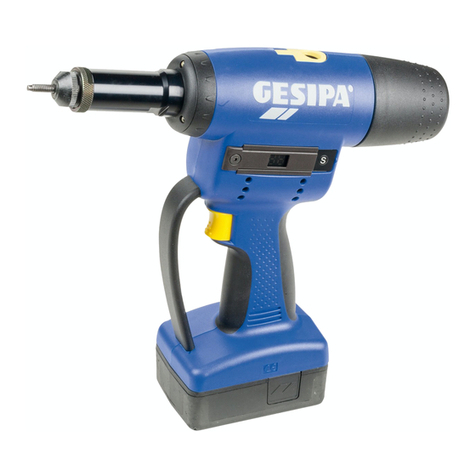12
• Aufgedrillte Blindnietmutter bis zum
Anschlag in die Bohrung des Werkstückes
einführen.
• Den Setzvorgang durch Drücken des Betä-
tigungsknopfes starten.
Betätigungsknopf festhalten!
• Nachdem entweder der eingestellte Setz-
hub oder die eingestellte Setzkraft erreicht
5.2 Setzen der Blindnietmutter
wurde (siehe dazu Punkt 4!), wird automa-
tisch der Abdrillvorgang gestartet. Der Ab-
drillvorgang läuft dabei solange, wie der Be-
tätigungsknopf gedrückt wird. Erst nachdem
der Gewindedorn vollständig aus der gesetz-
ten Mutter ausgedrillt wurde, darf der Betäti-
gungsknopf losgelassen werden.
• Wenn z.B. nach einem Setzvorgang der
Betätigungsknopf zu früh losgelassen und
dadurch der Gewindedorn noch nicht voll-
ständig ausgedrillt wurde oder beim Auf-
drillen die Mutter schief angesetzt wurde,
kann durch Drücken des Abdrillknopfes 7
(siehe Bild 1) manuell ein Abdrillvorgang
gestartet werden.
• Kann der Gewindedorn nicht durch Drü-
5.3 Manuelles Abdrillen der Mutter
cken des Abdrillknopfes 7 ausgedrillt werden
(z.B. Gewinde in der Mutter stark deformiert),
kann der Gewindedorn mit der Hand ausge-
drillt werden. Dazu den beiliegenden Sechs-
kantschraubendreher SW4 in den Innen-
sechskant 8 am Luftaustritt des Luftmotors
(siehe Bild 1) einstecken und durch Linksdre-
hung den Gewindedorn lösen.
Der Aufbewahrungsort des Blindnietmuttern-
setzgerätes muss trocken sein.
Bei Bedarf sind verschlissene Gewindedorne
gemäß Punkt 3.1 zu ersetzen.
Nach längerem Gebrauch kann es erforderlich
sein, dass Hydrauliköl nachgefüllt oder ersetzt
werden muss. Das Nachfüllen von Hydrauliköl
erfolgt in folgenden Schritten:
• Nietgerät vom Druckluftnetz trennen
• Mundstück 2 mit Kontermutter 1
abschrauben
• Setzhub auf 10 mm stellen (alle Striche
der Skala 5 sichtbar)
• Öl- Nachfüllschraube Nr. 11 und Dichtung
Nr. 12 mit Torx-Schraubendreher T20
abschrauben
• Beiliegenden Öl-Nachfüllbehälter mit
Deckel aufschrauben
• Nietgerät an Druckluftnetz anschließen und
Auslöser betätigen; danach Nietgerät vom
Druckluftnetz trennen
6. Wartung und Pflege
• Altes Öl aus Öl-Nachfüllbehälter ausgießen
• Öl-Nachfüllbehälter bis zur Markierung mit
Hydrauliköl füllen
• Am Gewindedorn 3 die Zugkolbeneinheit
von Hand mehrfach vorsichtig hin- und her-
bewegen bis Öl blasenfrei austritt; Zug-
kolbeneinheit vollständig bis Anschlag nach
hinten schieben und hinten stehen lassen
• Ölnachfüllbehälter abschrauben und
Ölnachfüllschraube 11 mit Dichtung 12
einschrauben
• Nietgerät an Druckluftnetz anschließen
• Ölnachfüllschraube 11 vorsichtig ca. 2
Umdrehungen lösen; Zugkolbeneinheit
bewegt sich langsam bis in die vordere
Endlage. Dabei austretendes Öl mit
Lappen auffangen!
• Ölnachfüllschraube 11 festziehen
• Mundstück 2 mit Kontermutter 1
aufschrauben

